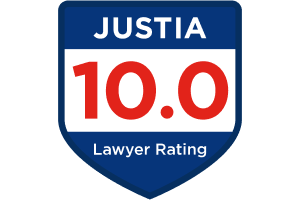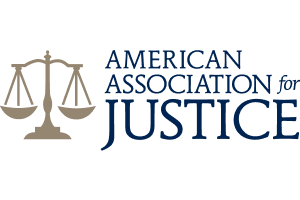New York SUV Accident Lawyer
A serious SUV accident can have long-term consequences, and a knowledgeable New York SUV accident lawyer can help victims understand the challenges they may face. According to the National Highway Traffic Safety Administration, SUVs are more likely to roll over than other types of passenger vehicles, and rollover crashes are responsible for nearly 35% of all deaths from passenger vehicle accidents. In urban areas like New York, the size and design of SUVs increase the risk of catastrophic injuries for pedestrians, cyclists, and occupants of smaller vehicles.
Victims of SUV accidents often suffer traumatic brain injuries, spinal cord damage, multiple fractures, and internal injuries. These conditions may require surgery, extended hospital stays, and rehabilitation. Some victims lose the ability to work, either temporarily or permanently, leading to serious financial strain. At the same time, medical expenses and out-of-pocket costs continue to grow.
In addition to the physical and financial toll, many people experience psychological effects such as anxiety, depression, or post-traumatic stress. Life can change dramatically, especially when a person’s independence is affected. Families may also face new caregiving responsibilities and long-term disruptions to their routines and financial stability.
A recent jury awarded $13.8 million to the family of a deceased victim, who was killed in a rollover crash involving a 1998 Ford Explorer. The court found Ford liable for defective and negligent roof design that caused fatal head injuries when the SUV rolled over nearly four times. The award included damages for emotional distress, psychiatric treatment, and loss of services for surviving family members.
An experienced New York SUV accident lawyer can explain your rights, help identify responsible parties, and guide you through the process of pursuing compensation under New York law. Legal support can make a meaningful difference in how victims recover and move forward.
Why Are SUV Accidents More Dangerous in New York?
SUVs are taller and heavier than standard passenger vehicles. These qualities can provide some protection in certain types of accidents. However, they also increase the risk of rollovers, reduce maneuverability, and limit the driver’s visibility. These issues are particularly dangerous in a busy and congested area like New York.
Key factors that contribute to SUV accidents include:
- High center of gravity, which increases the risk of rollover crashes during sharp turns or sudden lane changes
- Extended blind spots, which limit visibility and make it harder to detect smaller vehicles or pedestrians
- Increased stopping distance, making it more likely to rear-end another vehicle in traffic
- Impact force, which can cause more severe injuries to smaller vehicles or pedestrians
The National Highway Traffic Safety Administration (NHTSA) has repeatedly found that SUVs are more prone to rollover accidents than sedans. This is particularly concerning given how common aggressive driving and sudden stops are in New York traffic.
What Kinds of SUV Accidents Happen Most Often?
SUVs are involved in a wide range of collisions. These are the most frequent types seen in New York:
- Rollover Accidents. SUV rollovers can happen when a driver turns too sharply, overcorrects, or hits a curb or uneven road surface.
- Rear-End Collisions. Due to their weight, SUVs need more time and distance to stop. This makes rear-end collisions common, particularly in stop-and-go traffic.
- Pedestrian Collisions. SUVs strike pedestrians at higher points on the body than sedans. This results in more severe injuries, especially to the hips, pelvis, and head. The elevated front end of many SUVs means that when they hit a pedestrian, the person may be thrown under the vehicle rather than over the hood.
- Multi-Vehicle Pileups. When an SUV crashes at speed, the force of impact can trigger a chain reaction. On highways like the BQE or Long Island Expressway, even a moment of inattention can cause a multi-car pileup.
- Collisions with Smaller Vehicles. Smaller vehicles involved in a collision with an SUV are at a disadvantage. In side-impact crashes, the SUV’s height can cause it to ride over the side structure of a sedan, leading to more significant cabin intrusion.
- Tire Failures. SUVs are heavier and often carry more passengers or cargo than smaller vehicles. This puts additional stress on the tires. Blowouts at high speeds can result in rollovers or serious accidents. If the tire was defective, the manufacturer may be liable under product liability law.
What Injuries Are Common in SUV Accidents?
The injuries sustained in SUV collisions vary widely depending on the speed, point of impact, and type of crash. However, several types of injuries are more likely in SUV crashes due to their force and dynamics.
Common injuries include:
- Traumatic brain injuries (TBIs), often resulting from head strikes or ejection during a rollover
- Spinal cord damage, including herniated discs and paralysis
- Fractures to the ribs, legs, arms, or pelvis
- Internal bleeding and damage to organs such as the liver, spleen, or kidneys
- Whiplash and soft tissue damage affecting mobility and quality of life
- Psychological trauma, including post-traumatic stress disorder
In Pommells v. Perez, 4 N.Y.3d 566 (2005), the New York Court of Appeals reaffirmed that plaintiffs seeking non-economic damages in motor vehicle accident cases must present objective medical evidence of a serious injury under Insurance Law § 5102(d). Subjective complaints alone are insufficient. Plaintiffs must support claims with diagnostic tools such as MRI scans or quantified range-of-motion tests, and expert opinions must directly link the injury to the accident. A gap in treatment or intervening health issues, if unexplained, may break the causal chain. In Pommells’ case, his failure to seek treatment for over three years and the presence of an unrelated kidney condition undermined his claim. The court upheld summary judgment for the defendants due to insufficient proof of a causally related serious injury.
Who Can Be Held Responsible in an SUV Accident?
Liability in an SUV accident depends on the circumstances. Multiple parties may be at fault.
- Other Drivers. Most SUV accidents are caused by driver negligence. This includes distracted driving, speeding, failing to yield, or following too closely. Under VTL § 1129(a), tailgating is prohibited, and failure to keep a safe distance is often cited in SUV rear-end crashes.
- Employers. If the SUV was being driven for work purposes, the employer may be liable under the doctrine of respondeat superior. For instance, if a delivery driver or rideshare driver causes an accident while on duty, the employer or rideshare company may be held accountable.
- Vehicle Manufacturers. If a defect in the SUV caused the crash, such as a faulty braking system or weak roof structure, the manufacturer may be liable. In Motelson v. Ford Motor Co., 2008 NY Slip Op 51807(U), the plaintiffs alleged that a 1998 Ford Explorer was defectively designed, leading to fatal and serious injuries in a rollover crash. The jury found Ford liable under strict liability and negligent design, concluding that the SUV’s roof support system was unreasonably weak and failed during the rollover, crushing the driver’s head. Expert testimony showed Ford had removed a steel beam in the 1998 model, weakening the roof compared to earlier designs, and that safer, low-cost alternatives were available.
- Government Agencies. If poor road conditions contributed to the accident, the municipality responsible for the roadway may be liable. This includes failure to repair potholes, install warning signs, or maintain traffic signals.
What If I’m Partly at Fault for an SUV Accident?
New York follows a pure comparative fault system under CPLR § 1411. This means that even if you are partly responsible for an accident, you can still recover compensation. However, your total award will be reduced in proportion to your share of the fault. For example, if your damages are $200,000 and you are found to be 25 percent at fault, your recovery would be reduced to $150,000.
Comparative negligence is often a key issue in SUV accidents. Because SUVs are heavier and taller than standard passenger vehicles, they can cause more severe damage when a crash occurs. However, that does not mean the SUV driver is automatically 100 percent at fault. If the other driver stopped suddenly without warning, changed lanes improperly, or failed to use signals, they may share some of the blame.
In Martinez v. Colonna, 2024 NY Slip Op 05971 (App. Div. 2d Dep’t Nov. 27, 2024), the plaintiff was rear-ended by an SUV operated by Michael Colonna and owned by Royal Realty Corp. The plaintiff moved for summary judgment on liability and asked the court to dismiss the defense of comparative negligence. The court granted summary judgment on liability, noting that a rear-end collision typically creates a presumption of negligence by the rear driver. However, the Appellate Division reinstated the comparative negligence defense, finding that the SUV driver had raised a factual issue by claiming the plaintiff stopped suddenly for no apparent reason. The court held that it was up to a jury to decide whether the plaintiff’s conduct contributed to the crash. This case shows how comparative negligence can apply even in rear-end SUV collisions, depending on the facts of how the accident happened.
What Are New York’s No-Fault Insurance Rules?
Under Insurance Law § 5104, New York’s no-fault system covers medical bills, lost wages, and certain expenses up to $50,000, regardless of who was at fault. This applies to most SUV accidents.
However, to sue the other driver for pain and suffering or other non-economic damages, you must meet the serious injury threshold defined in Insurance Law § 5102(d). Qualifying injuries include:
- Fractures
- Significant disfigurement
- Permanent limitation of a body part or function
- Loss of a fetus
- Death
- A 90/180 injury, which refers to a medically determined impairment or limitation that prevents the injured person from performing substantially all of their usual and customary daily activities for at least 90 days during the 180-day period immediately following the accident. This threshold is part of New York’s definition of a “serious injury” under Insurance Law § 5102(d). To qualify, the limitation must be supported by objective medical evidence and cannot be based solely on the injured person’s subjective complaints. Courts often require consistent medical treatment and documentation showing that the individual’s normal routine, such as working, caring for dependents, or handling household tasks, was significantly disrupted during this 180-day window.
To qualify for no-fault benefits, you must also file your claim within 30 days of the accident.
How Long Do I Have to File a Lawsuit?
Deadlines vary depending on the nature of the claim. Missing a deadline could prevent you from pursuing compensation.
- Personal injury: You have 3 years from the date of the accident to file a lawsuit under CPLR § 214(5). This includes claims for injuries caused by SUV collisions.
- Wrongful death: You have 2 years from the date of death to bring a wrongful death claim under EPTL § 5-4.1. This deadline applies even if the decedent survived the accident for a period of time before passing away.
- Claims against municipalities: If your SUV accident involved a city or other public entity, you must file a Notice of Claim within 90 days under General Municipal Law § 50-e. The actual lawsuit must be filed within 1 year and 90 days under GML § 50-i.
Certain exceptions may apply to these deadlines, such as those involving minors or delayed discovery of injury. To avoid missing a filing window that could bar your claim, it is important to speak with an experienced SUV accident attorney serving New York.
Frequently Asked Questions
A. Yes. Passengers injured in SUV accidents have the right to file claims against any at-fault driver, including the SUV driver or other involved parties.
A. It might. Some SUVs have known handling, rollover, or crashworthiness issues that could be relevant to a product liability or design defect claim.
A. If you were driving or riding in a vehicle for work purposes, you may be entitled to workers’ compensation in addition to a personal injury claim against third parties.
A. Yes. Pedestrians injured by SUV drivers can pursue a personal injury claim if the driver was negligent or violated traffic laws.
Contact Stephen Bilkis & Associates
At Stephen Bilkis & Associates, we understand how overwhelming an SUV accident can be. Victims often face serious injuries, growing medical bills, lost income, and complex insurance issues. Our experienced SUV accident attorneys in New York are well-versed in the unique risks posed by SUVs, including rollover hazards and severe collision impacts. We understand how New York’s no-fault insurance laws and serious injury thresholds apply in these cases, and we know how to fight for the compensation our clients deserve.
With decades of experience and a history of strong settlements and verdicts, we are prepared to negotiate aggressively with insurance companies or take your case to court if needed. Our team provides compassionate, client-centered representation at every step.
Contact us at 800.696.9529 to schedule a free, no-obligation consultation. We represent SUV accident victims in Manhattan, Brooklyn, Queens, the Bronx, Staten Island, Nassau County, Suffolk County, Long Island, and Westchester County.






